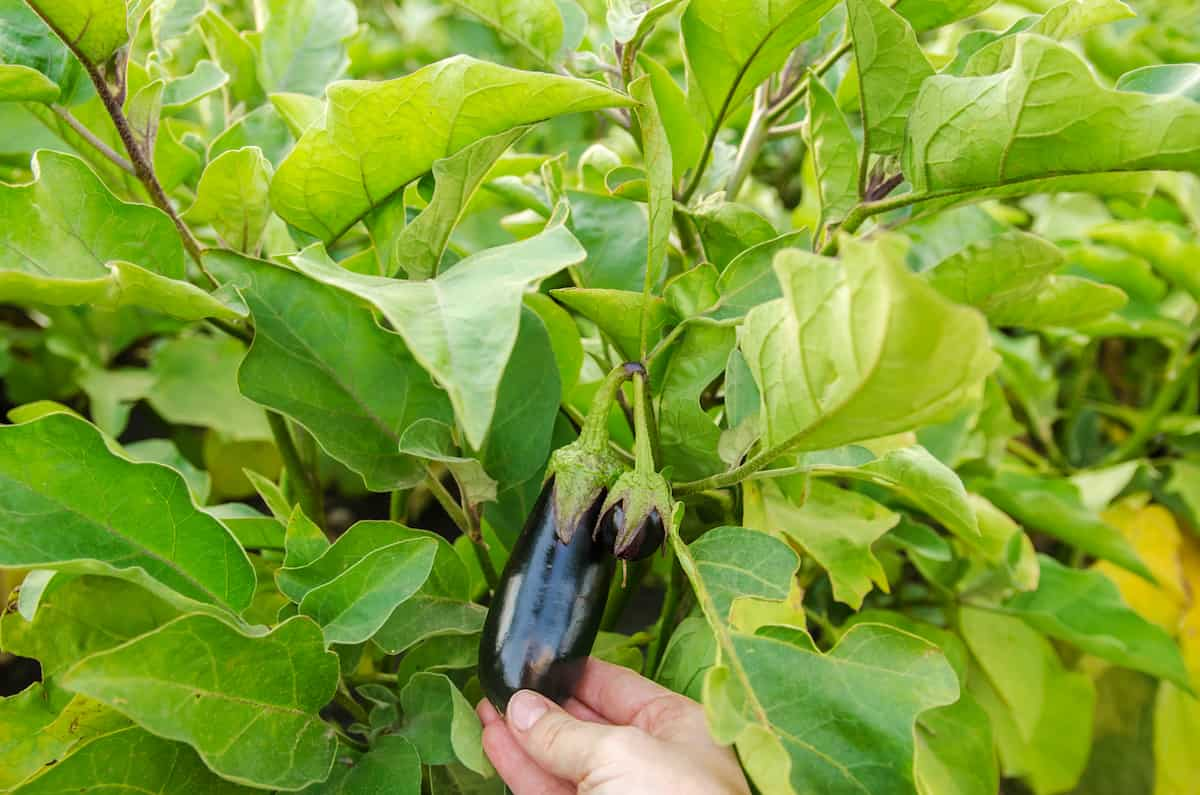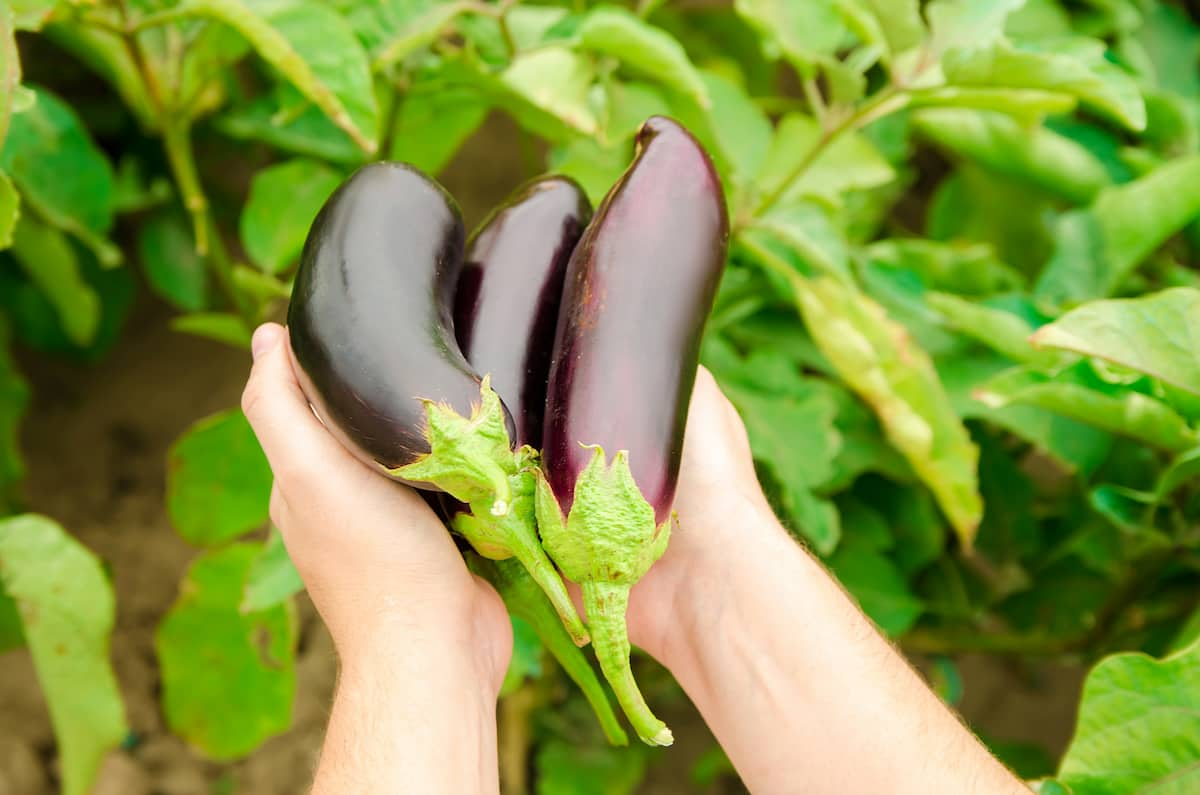Alternaria leaf spot disease is a common fungal disease that affects many vegetable crops, such as eggplants, tomatoes, and carrots. Alternaria leaf spots can cause significant yield losses if not managed properly. The disease is caused by two species of Alternaria fungi, which produce characteristic leaf spots with concentric rings on the infected plants.

Alternaria Rot Management in Eggplant
The Causal Organism of Alternaria Leaf Spot Disease
The causal organism of Alternaria leaf spot disease is a fungus called Alternaria melongenae, A. solani. It is a common pathogen that affects many crops, including eggplant, and can cause significant yield losses if not managed properly.
The Disease Cycle of Alternaria Leaf Spot Disease
- Survival: The pathogen survives in infected plant debris left on the soil surface or buried in the soil and on or in the seed.
- Infection: Under favorable conditions in the spring, the fungi produce spores carried by wind and splashing rain. When these spores come into contact with susceptible host tissue, they germinate and penetrate the plant surface, causing infection.
- Disease development: Once the pathogen has infected the plant tissue, it grows and reproduces, causing characteristic leaf spots with concentric rings. The spots may coalesce to cover large areas of the leaf blade, and severely affected leaves may drop off. In the case of A. melongenae, the fungus may also infect the fruits, causing large deep-seated spots that turn yellow and drop off prematurely.
- Spore production: As the disease progresses, the fungus produces new spores, which can be carried by wind and rain to infect other plants, leading to secondary disease cycles.
- Disease cycle continuation: Secondary disease cycles can occur if the weather remains favorable for spore production and infection. In some cases, the pathogen may also overwinter on infected plant debris or in seed, leading to new infections in subsequent growing seasons.
Causes/Conditions Favorable for Alternaria Leaf Spot Disease Spread in the Field.
- Environmental factors: Heavy dews, rainy conditions, and temperatures between 66 and 73 F favor spore production and secondary infections.
- High humidity levels can also contribute to disease development, as the moisture on the leaf surface provides an ideal environment for the pathogen to grow and reproduce.
Symptoms of Alternaria Leaf Spot Disease
- Irregular spots on the leaves: The disease causes irregular spots on the leaves, typically 4-8 mm in diameter. These spots have a dark brown or black center and a yellow halo around the edges.
- Concentric rings: The spots may have concentric rings, a characteristic feature of Alternaria infections.
- Coalescing of spots: The spots may coalesce and cover large areas of the leaf blade, leading to the death of the affected tissue.
- Leaf drop: Severely affected leaves may drop off prematurely, leading to defoliation and reduced plant vigor.
In case you missed it: Damping Off Management in Eggplant: Symptoms, Treatment, Chemical, Biological, Natural, and Organic Control

Alternaria Leaf Spot Management in Eggplant by Cultural Method
- Plant Alternaria-indexed seed or treat seed in a hot water bath: This can help reduce the amount of pathogen present on the seed surface and prevent the spread of the disease.
- Practice 2-year rotations: Avoid continuous carrot culture and rotate with non-Solanaceous crops such as maize or beans to reduce the pathogen in the soil.
- Avoid planting new fields near existing fields with blight symptoms: This can help prevent the spread of the disease from one field to another.
- Use furrow irrigation: Using furrow irrigation instead of sprinkler irrigation may help reduce the amount of moisture on plant leaves, reducing the incidence of Alternaria leaf spot disease.
Alternaria Leaf Spot Management in Eggplant by Biological Method
Foliar sprays of Serenade ASO and MAX: Serenade ASO and MAX are biological fungicides that contain Bacillus subtilis. This bacterium helps protect plants from fungal diseases, including Alternaria leaf spots. These products can be used as a foliar spray to help control the spread of the disease.
Alternaria Leaf Spot Management in Eggplant by Chemical Method
- Identify the disease: Confirming that the Alternaria leaf spot causes the symptoms before applying any fungicide is important. Consult a plant disease specialist or an agricultural extension agent for a proper diagnosis.
- Choose an effective fungicide: Many fungicides are available to control the eggplant’s Alternaria leaf spot. Some options include mancozeb, copper-based fungicides like Bordeaux mixture, copper oxychloride, and zineb.
- Prepare the fungicide solution: Mix the fungicide according to the recommended rate on the label. For example, spray mancozeb at 2 grams per liter of water. For copper-based fungicides, prepare a 1% Bordeaux mixture solution, 2 grams of copper oxychloride per liter of water, or 2.5 grams of zineb per liter of water.
- Apply the fungicide: Apply the fungicide evenly to all plant surfaces, including the undersides of the leaves. Be sure to wear appropriate protective gear when handling and to apply the fungicide.
- Repeat applications: Most fungicides require repeated applications to control Alternaria leaf spots effectively. Follow the recommended application schedule on the fungicide label, typically every 7-10 days, until the disease is under control.
In case you missed it: Phytophthora Blight Management in Eggplant: Symptoms, Treatment, Chemical, Biological, Natural, and Organic Control

Preventive Measures for Control of Alternaria Leaf Spot Disease
- Use certified seed from a registered distributor: Certified seed is disease-free and more likely to produce healthy plants. Purchasing seed from a registered distributor ensures that the seed has been tested and is of high quality.
- Rotate with non-Solanaceous species such as maize and beans: Alternaria leaf spot disease can survive in the soil for long periods. Rotating with non-Solanaceous crops can help reduce the buildup of the pathogen in the soil.
- Remove weeds from within and around the garden: Weeds can harbor Alternaria leaf spot disease and other pests and diseases. Removing weeds from within and around the garden can help reduce the spread of the disease.
- Mix seed with a broad-spectrum fungicide before planting: Mixing seed with a broad-spectrum fungicide can help protect seedlings from Alternaria leaf spot disease and other fungal diseases.
- Apply a fungicide spray during transplanting or after the plants have set in the field: Fungicide sprays can help control the spread of Alternaria leaf spot disease. It is important to begin spraying before leaf spots are seen and to continue spraying until harvest.
- Manage crop debris: Infested debris left on the soil surface can be a significant source of pathogen spores for up to 12 weeks after harvest. Therefore, managing debris by properly removing and disposing of infected plant debris is important.
Conclusion
Alternaria leaf spot disease is a significant problem for eggplant growers and can cause severe yield losses if left unchecked. PrAs chemical methods are available, preventionnd and management strategies are crucial for controlling the disease’s spread.
- Deworming Schedule for Dogs/Puppies: A Beginners Guide
- How to Prevent and Control Parasites in Goats
- Beneficial Insects in Pest Management
- Natural Solutions for Pest Control in Flower Gardens
- Types of Fungicides Used in Agriculture
- Common Issues in the Fruit Development Stage of Pomegranate Farming
- Fruit Development Issues in Papaya: Easy Solutions and Treatment
- Soil-Borne Diseases and How to Protect Your Plants
- Practices to Prevent Disease Spread in the Garden